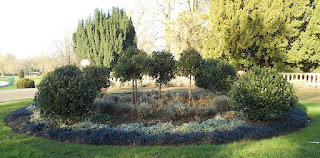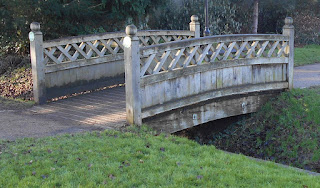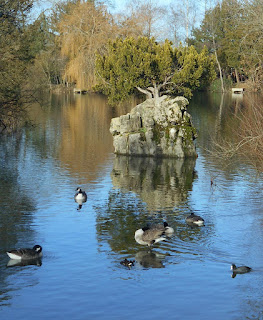Another of those "I've only got a couple of hours spare, but want to go out" type trips from earlier this month when the computer was out of action. Not wanting to go too far this time we travelled over to Crawley which is our nearest big town. We rarely go over that way, but I discovered last year that it has a selection of parks and green spaces tucked away in amongst all the "new town" development which sprung up to take the London overspill post WWII. This time we headed for Worth Park Gardens.
Originally the area was part of the ancient Worth forest. People have lived here since at least Saxon times and and for many centuries it served as a deer hunting ground. By the 1800s the land was in the possession of the Montefiore family who had a large house [called Milton Mount] and parkland built in the estate. By the late 19th century it was decided that the gardens were in need of a revamp and the then famous Victorian garden designers and terracotta manufacturers, James Pulham and son, were chosen to draw up the design and carry out the work. The house functioned as a girls' boarding school from 1920 until it closed in 1960 when it was demolished and replaced by a large block of flats. Thankfully the grounds were retained and nowadays a set of very dedicated volunteers maintain them beautifully.
To give you an idea of the former grandeur of the property this is the stable block which now houses the visitor centre. In front of it stands the "Timeline Totem" carved by Simon Groves in 2016 using a storm damaged tree. It visually records the history of the area.




















That looks wonderful. The rich really knew how to spend their money back in the day! xxx
ReplyDeleteIt's fascinating the choices they made. I guess the equivalent is now seen in places like Dubai where they spend all their money. Arilx
DeleteThat totem tree is amazing. Looks a wonderful place to visit again
ReplyDeleteIf I go back in a different season I shall post about it here. Arilx
DeleteKind of waw really. x
ReplyDeleteIt's impressive considering these days it's slap bang in the middle of a housing estate. Arilx
DeleteI like the way you explore places and find some gems.
ReplyDeleteIt comes from a determination to enjoy a full and rich life on a shoestring budget. I decided to be a tourist at home rather than just when I'm away. Arilx
ReplyDelete